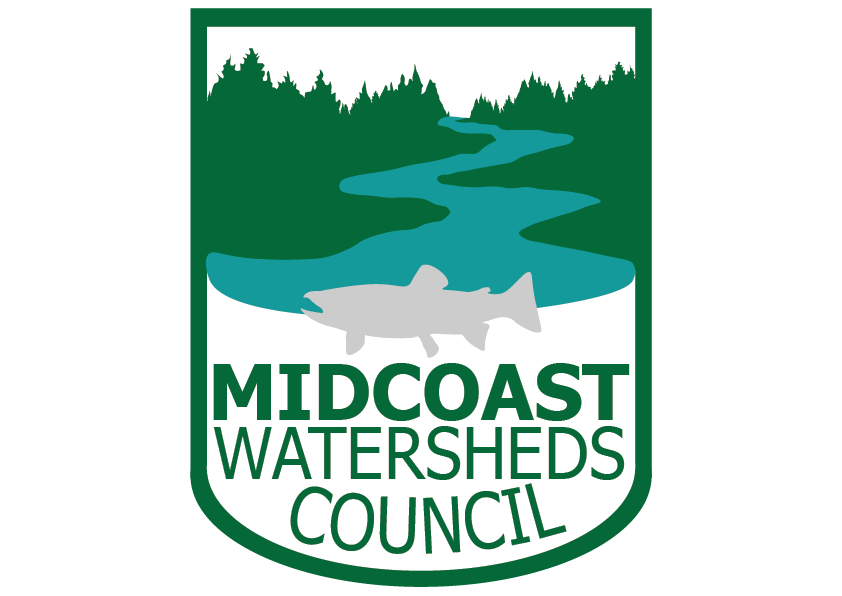When large trees fall into a stream, they divert the energy of water and create complex arrangements of pools and riffles that are crucial for young salmon and other animals to survive. Extensive logging and human alteration has dramatically reduced the amount of wood and complexity in streams.
Pool created by large conifer wood placement under an alder forest.
In partnership with ODFW, MCWC installed 679 logs in 6.8 stream miles of salmon habitat in Mill, Gunn, and Cerine Creek. The goal of this project was to restore habitat complexity for young salmon. Large wood accumulates spawning gravel, provides substrate for prey to grow, and creates deep pools and slow water for young fish to live in.
Map of Large Woody Debris sites (LWD), Temperature, Life Cycle Monitoring (LCM), and Benthic Macro Invertebrate (Macro), and geomorphology site (Geo) locations.
Because the mouth of this basin has housed ODFW’s Life Cycle Monitoring (LCM) site for over 20 years, there is long term data about the numbers of juveniles and returning adults in this area. Strong before and after data make this project an excellent opportunity to study the effectiveness of projects like these.
This project is being followed up by an extensive Effectiveness Monitoring project to determine the effects of the large wood placement on fluvial geomorphology, aquatic habitat, benthic invertebrates assemblages, overwinter survival of juvenile coho, and overall coho smolt production for the watershed.
Field tech conducting Aquatic Habitat Inventory study.
Partners include: ODFW, Weyerhaeuser, Oregon DEQ, and OSU College of Forestry. The study is designed to inform future in-stream restoration priorities, large wood placement design, land use management, coastal coho recovery goals and objectives, and limiting factors analyses for coho salmon production.



